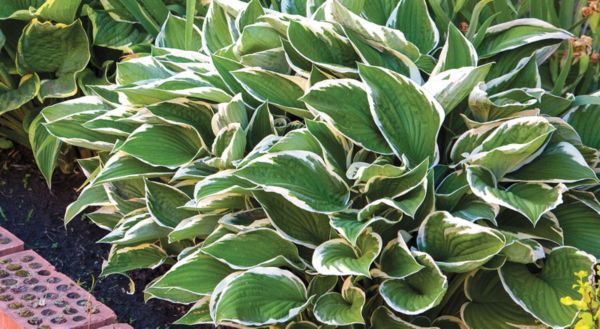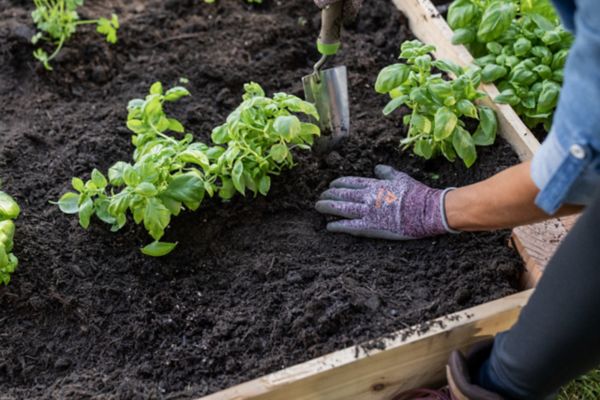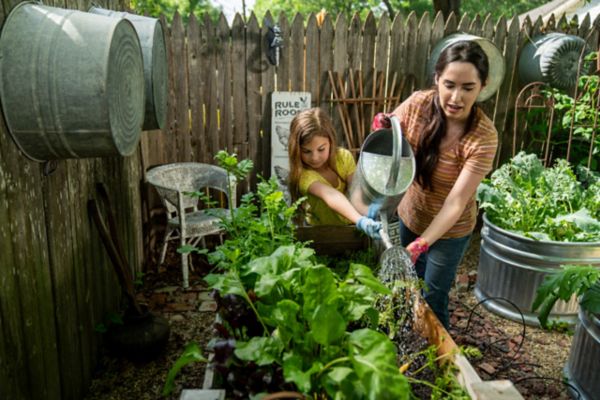How to Grow Carrots
Authored by Leah Chester-Davis
Carrots are delicious cooked or raw. They can be chopped and thrown into salads, soups, or stews. They can be stir-fried, boiled, braised, grilled, or roasted, which enhances their sweet, rich flavor. They can also be grated and used in baked goods.
Carrots may be available year-round in the grocery store but for the home gardener they are a spring and fall crop. Their bright orange color signals that this hardy, cool-season vegetable is high in beta carotene, which is the source of vitamin A. If you ever heard your momma or someone else tell you that carrots help you see better, it is because vitamin A is important for vision. They are also high in fiber.
While the bright orange, long, slender, conical roots may be the most popular, some varieties are short and round. There are also purple, yellow, red, or white varieties. The color-filled varieties contain other phytonutrients such as lycopene and anthocyanins which also contribute to good health. While many different shapes and colors may not be readily available in your local market, the good news for home gardeners is that seeds are available for anyone who wishes to branch out and try them.
About carrots
| Botanical name: | Daucus carota var. sativus |
| Common name: | Carrots |
| Plant type: | Biennial grown as an annual |
| Size: | Plant, 1 to 2 feet tall; root size depends on variety, golf-ball size to 10 inches long |
| Sun exposure: | Full sun |
| Soil type: | Sandy, loamy soil |
| Soil pH: | 6.0 to 6.8 |
| Hardiness zones: | 3 to 10 |
| Average first frost: | Varies by region |
| Average last frost: | Varies by region |
| Container friendly: | Yes, depending on variety; look for Chantenay types or miniature varieties |
| Beginner friendly: | Can be challenging but worth a try |
Growing
Because carrots are a root vegetable, they need well-worked, deep, loose soil that is free of rocks or stones, which can cause the roots to become twisted or forked. Raised beds work quite well, particularly if you are in an area with clay or rocky soil. An inch of well-rotted manure or compost worked into the planting bed to a depth of 8 to 9 inches helps improve the soil. If you have had your soil tested, follow recommendations. Soil test kits are available from your county Extension center for free or a small fee.
Grow carrots in full sun, at least 6 hours per day, preferably 8 to 10. They are propagated by seed sown directly into garden soil, not transplanted. They can be slow to germinate, anywhere from a week to three weeks. Depending on the variety, they will be ready to harvest in 55 to 80 days (about 2 and a half months). This can be a fun crop for children to grow. Select globe or miniature types that can be harvested earlier.
One foot of row yields about 1 pound of carrots. Depending on your family’s preferences, plant 5 to 10 feet of row per person for fresh use; more for preserving.
Types of carrots
There are five main types of carrots.
Imperator is most common in grocery stores. They are deep orange and about 8 to 10 inches long with a shoulder diameter of 1 ½ inches that tapers to the tip.
Danvers is typically 7 inches long with a shoulder diameter of about 2 to 2 ½ inches that tapers to the tip. They are good for heavy soils.
Chantenay types grow to about 5 inches long and are about 2 to 2 ½ inches in diameter.
Nantes is about 6 inches long, 1 ½ inches in diameter with little taper and a blunt tip.
Globe or Miniature types grow to only 2 to 3 inches long and 2 inches in diameter. They are good choices for heavy, clay soil or for container gardening.
Planting
Plant in the spring when the soil temperature is at least 45 degrees F or about two weeks before the last frost. This varies, depending on region. Carrots can also be planted in the fall and in warmer climates they may grow all winter. For a fall crop, plant 10 to 12 weeks (about 3 months) before the first frost. The warmer the soil, the more quickly they will germinate. To determine soil temperature, a soil thermometer can be bought for about $10 at your local garden center. This cool-season crop sweetens when the temperatures are cool. Your local garden center or Extension office can recommend varieties that are best for your region and soil.
Sow seeds ¼ to ½ inch deep and ½ inch apart. Space rows 12 to 18 inches apart. Carrot seed is quite tiny; pelleted seed or seed tape may make planting easier. Some tiny seeds such as carrots or lettuce are sometimes “pelleted,” meaning they are coated with a dissolvable layer such as clay to make it easier for planting and germination. Seed tape comes in various lengths of biodegradable tissue-like tape that has the seeds spaced at the correct distance for growing. Another choice is to scatter the seeds in a 3- to 4-foot bed.
In poorly drained soils, create mounds or ridges about 4- to 6-inches high, and sow seeds in the ridge. Keep the seedbed evenly moist during the germination period. For a continuous supply of carrots over a longer period, make two or three plantings spaced three weeks apart.
After they germinate and when the foliage is about 2 inches tall, thin so they are about 2 to 3 inches apart to allow roots to develop. If you have used seed tape you may not need to thin as the spacing may have already been done for you.
They will need about 1 inch of water per week. Soak the soil thoroughly and keep it evenly moist throughout the growing period. Dry soil can result in misshapen or bitter-tasting carrots.
Keep weeds in check. Be careful when cultivating to avoid injuring roots. Use straw mulch to suppress weeds and conserve moisture. When nearing harvest, reduce watering because too much at this point may cause roots to crack.
Fertilizing
Utah State Extension recommends fertilizing by sidedressing with ¼ cup of a nitrogen-based fertilizer (21-0-0) per foot of row 6 weeks (about 1 and a half months) after seedlings appear or use an organic fertilizer. Follow label directions. Water in thoroughly. Do not use any fertilizer containing a weed and feed killer.
Controlling Pests, Diseases, and Other Problems
Carrots are relatively pest-free in the home garden. Purchase seed from a reputable source to minimize the chance of seed-transmitted diseases. Leafhoppers can transmit carrot aster yellows which cause deformed roots and dense tufts of hair-like rootlets. Remove and discard diseased plants and roots. The parsley worm, which is the larval stage of the swallowtail butterfly, may feed on the leaves but rarely causes severe damage. If slugs become a problem, remove mulch. Carrot rust flies may result in maggots that feed on the roots. Harvest as soon as possible.
Harvesting and Storing
Check the maturity date for the variety you are growing. Carrots typically are ready to harvest 55 to 80 days (about 2 and a half months) after planting. They are ready when the roots reach a usable size, at least ½ inch in diameter; market sizes are typically about 1 to 1 ½ inches in diameter.
Loosen the soil with a spade or a digging fork to avoid breaking the carrot when pulling it from the ground. Pull a few from the soil to check them. If desired size, harvest as needed. In the fall, carrots can continue to be harvested after a frost. In some regions, it may be possible to extend the harvest by covering them with a heavy straw mulch before winter and harvesting as needed before the ground freezes.
Remove the carrot tops; place them in the compost bin or reserve for use in soups and stews. Removing the tops helps decrease moisture loss from the roots and helps the carrots stay fresh and crisp. Brush the soil off the carrots.
Storing
After the carrots are washed, drain them, then store in a plastic bag in the refrigerator. They will keep for several weeks to a few months when stored at 32 degrees F. Quality lessens when stored above 32 degrees F.
Carrots can be canned, pickled, or frozen (blanch them first). Blanching is scalding in boiling water for a brief period.
Remove the carrot tops and reserve for use in soups and stews.
Expert Tips
- An All-America Selections (AAS) winner, Purple Haze, is a carrot to try. It is purple on the outside with orange inside. It makes a beautiful presentation sliced into rounds and has excellent flavor raw or cooked. Carrot Thumbelina is another AAS Winner. It is a mini carrot roughly the size of a golf ball and is delicious raw or cooked. AAS winners have been tested for superior garden performance across the country by horticulture professionals.
- Soils that crust easily after a rain can be difficult for some seedlings to break through. Extension recommends sowing radishes in the same row because they germinate quickly, break the soil crust, and mark the row. Thin and/or harvest radishes before they compete with carrots. An alternative is to cover carrot seeds with a soil and sand mixture so the seedlings can easily break through it.
- If you wish to grow carrots in heavy or compacted soil, select a cultivar that grows in a short, more compact form such as Danvers, Nante, or miniatures.
Frequently asked questions
What causes my carrots to be bitter, tough, and small?
Inadequate watering or uneven moisture levels can result in bitter, tough, fibrous, undersized, and misshapen roots. Carrots need an inch of water each week.
What causes the tops of my carrots to turn green?
This is called “sunburning.” Some carrot varieties push the tops of the roots up out of the soil. To keep them from getting sunburned and turning green, add some straw mulch over them or hill or mound soil around the roots. If you end up with green “shoulders” on your carrots, simply cut that part away and use the rest of the carrot.
What are baby carrots?
This refers to carrots harvested before they are fully mature when they are about 4 inches long. They are tender and sweet but won’t store for long periods. Some short-rooted cultivars are sometimes called baby carrots.





